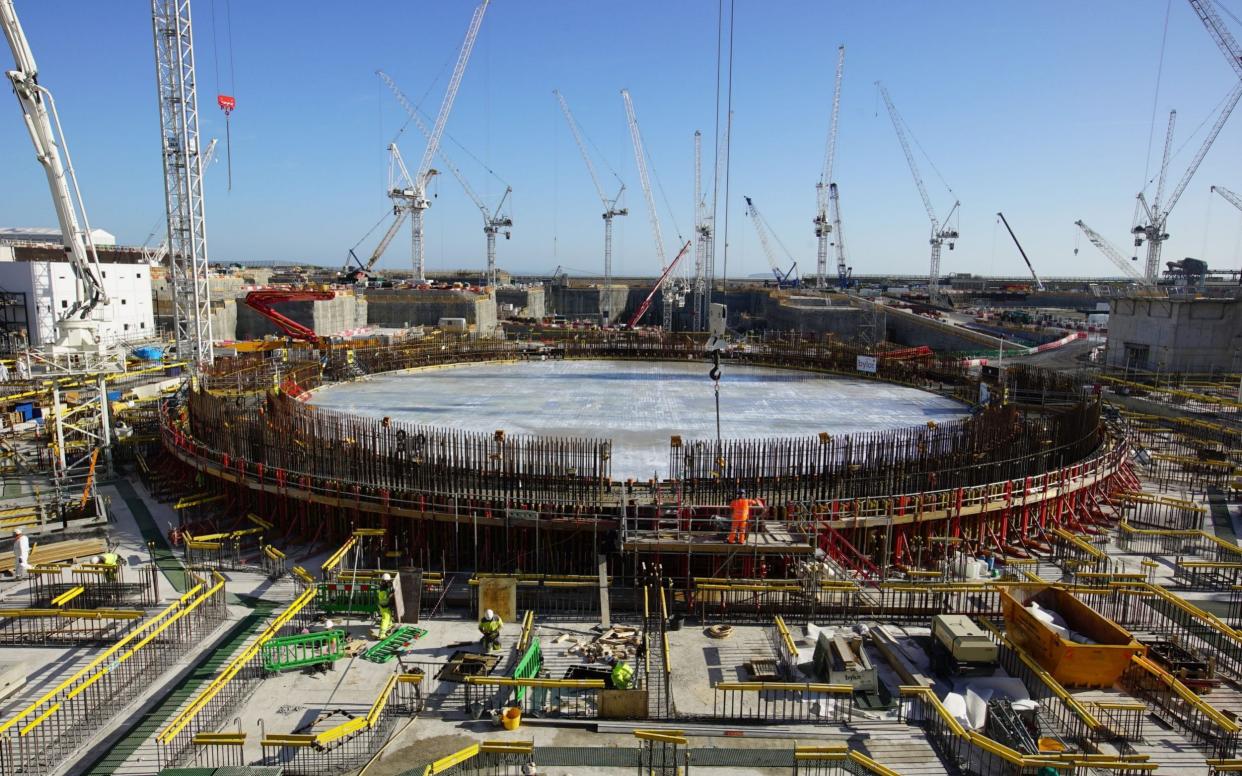Building Britain’s Biggest Nuclear Power Station, review: why didn't this film ask the real questions?

Coolant pumping. Rod insertion mechanisms. Fast neutrons. Thanks to Craig Mazin’s magnificent Chernobyl, we’re all experts in nuclear reactors now. Building Britain’s Biggest Nuclear Power Station (BBC Two) made occasional reference to the “dark legacy” of the disaster, among other controversies around the ongoing construction of Hinkley Point C in Somerset, but this was a largely cheerful affair focused on technicalities, flabbergasted by logistical challenges, awed by engineering feats and, above all, bowled over by statistics.
The project entails two uranium-fuelled reactors on a site the size of 250 football pitches, generating 3.2 gigawatts of electricity for the next 60 years from 2025. Not enough numbers? How about 5.6 million cubic metres of earth cleared for the reactor foundations, filled over three days of continuous pouring with “nuclear quality” concrete? Or 120,000 litres of seawater pumped every second to cool the steam from the reactors? Or 316 tons of baked beans consumed per annum by 5,000 workers on site? By the time they got to the giant boring machine, I was numb. Although there is something to be said for a film that lends a sense of epic scope to fried breakfasts.
With a target of zero carbon by 2050 and lingering scepticism around renewable energy, much rests on the success of the project, the first of its kind in Europe. So it seemed a little odd for one local’s (admittedly very valid) complaints about traffic to be given more airtime than, say, worries over industrial espionage in a project part-funded by the Chinese state, or of ballooning budgets (from £18 billion to £22 billion). Two of its three intended predecessors in Finland and France remain on ice owing to “concerns over cost and quality”, a phrase both vague and serious enough to warrant further enquiry, yet any doubts were confined to the voiceover and not put to the people involved.
Everyone interviewed stressed how far safety measures in the nuclear industry have advanced since the Eighties, accompanied by plenty of undeniably reassuring examples of absolute professionalism. Unlike Chernobyl, the reactors will be housed inside a reinforced concrete fortress designed to withstand earthquakes, tsunamis and plane crashes. “I think the next time these foundations will see the light of day will probably be sometime after the next ice age,” said construction lead and hostage to fortune Mike Murphy. Director Mat Stimpson documented the build of Crossrail in the BBC’s The Fifteen Billion Pound Railway, after all: the presence of cameras is no guarantee of success.

